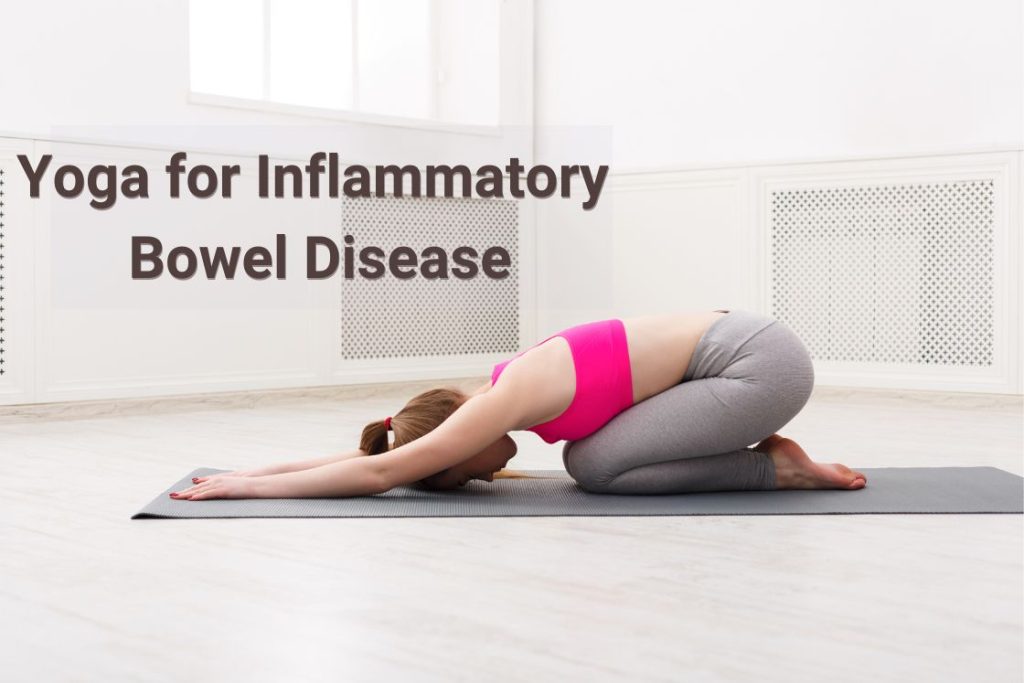
The term “inflammatory bowel disease” (IBD) refers to a group of diseases in which the tissues in the digestive tract are constantly inflamed.
Crohn’s disease and ulcerative colitis are the two main subtypes of IBD. In ulcerative colitis, only the colon is affected. Crohn’s disease, on the other hand, can affect any part of the gastrointestinal tract, from the mouth to the anus. However, it typically affects the colon, the last part of the small intestine, or even both.
In addition, in Crohn’s disease, damage to the tract occurs in patches and near healthy tissue. The various layers of the walls of the GI tract may be penetrated by the inflammation.
Colitis, on the other hand, is a continuous stain that begins in the rectum and continues into the colon. The innermost layer of the colon mucosa is the only site where inflammation occurs.
The course of IBD typically waxes and wanes. A flare-up of symptoms occurs when inflammation is severe, indicating that the disease is active.
Remission is when the inflammation is reduced or completely gone and the patient typically no longer has symptoms.
Inflammatory bowel disease is a dangerous disease that, while usually not fatal, can occasionally lead to complications that pose a life-threatening risk.
It can lead to complications such as intestinal obstruction, colon cancer, inflammation of the skin, eyes and joints, anal fissures, blood clotting, etc.
Causes of Inflammatory Bowel Disease
Unfortunately, the exact causes of IBD are still unknown. Originally, diet and stress were thought to play a major role in the development of IBD. However, later it was found that these factors are responsible for the aggravation of the disease.
Over the years, experts have identified two probable causes of IBD.
Inflammation is often caused by the immune system mistakenly attacking the cells of the digestive tract when fighting viruses, bacteria or other antigens.
Another reason may be that there have been previous cases of IBD in your family.
Symptoms of Inflammatory Bowel Disease
Depending on the level of inflammation and the location of the inflammation, inflammatory bowel disease symptoms can vary. Mild to severe symptoms are possible. Some common symptoms are:
- Abdominal discomfort and cramps
- Potentially bloody diarrhea
- Extreme need to go to the bathroom right away
- Fever
- Fatigue
- Loss of weight
- Reduced appetite
- The deficit in iron due to blood loss, anemia
How Yoga Can Help with IBD
Yoga is a fantastic option if you suffer from CED because it can help you feel less stressed. Since it’s not an intense aerobic exercise, you will not be jumping or doing extensive movements that could irritate your gut.
In addition, yoga poses can improve blood circulation to various parts of the body, which often contributes to faster healing. It supports the proper functioning of the digestive and elimination tracts, which prevents constipation or diarrhea.
Yoga calms the nervous system and keeps inflammation at bay. It can help increase the production of endorphins, which reduces or prevents stress and improves mood.
Practicing pranayama is also a part of yoga practice, which revitalizes your mind and body by improving prana flow. This helps to reduce the problem of fatigue.
You inadvertently start focusing on your diet, making sure you eat nutritious and healthy meals. You pick up healthy habits along the practice that can improve your overall well-being and prevent the onset of anemia.
Moroever, there have been some studies conducted that prove that yoga can be beneficial in reducing psychological symptoms.
Studies
A study published in 2015 concluded that since they aid in reducing stress, yoga-based interventions are safe and successful in treating patients with inflammatory bowel disease during the clinical remission phase.
In 2018, a study was published that noted that in-person and video-based yoga reduced stress and aids in identifying and managing physical symptoms in adolescents with IBD.
A literature review published in 2021 concluded that yoga is a safe and acceptable complementary practice to tackle symptoms of fatigue, depression, stress, and anxiety.
A narrative review published in 2022 also agreed with the fact that doctors can prescribe yoga interventions as a complementary method to control the psychological factors that may worsen IBD. this can further enhance the quality of life of such patients.
Even though some research is not done on large scale and it is still in efficacy, initial trials show the efficacy of yoga intervention.
Yoga Techniques for IBD Management
Incorporate yoga postures, pranayama techniques and mudras into your daily routine to find relief, promote better digestion and increase your overall well-being while living with IBD. Remember to listen to your body, practice mindfully, and consult your doctor before starting a new exercise program.
Gentle Yoga Poses for IBD
Yoga poses can be beneficial for individuals with IBS by relieving digestive discomfort, reducing stress, and promoting relaxation. These poses can improve digestion, increase abdominal strength, and regulate bowel movements, contributing to overall symptom relief and a better sense of well-being.
Thunderbolt Pose (Vajrasana)
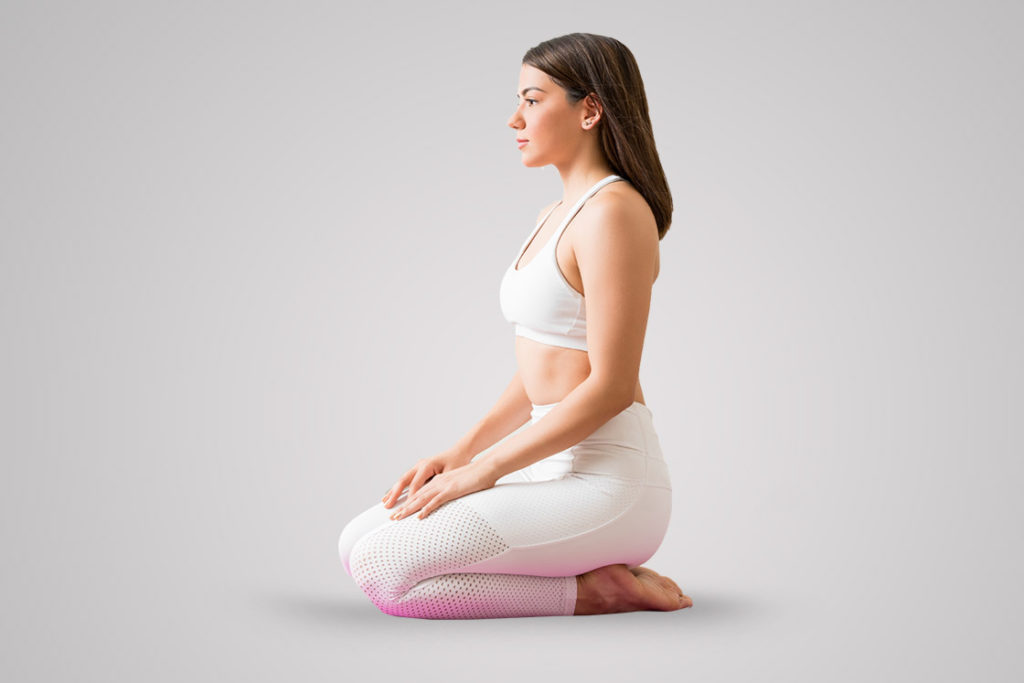
Vajrasana is known for curing stomach problems and improving digestive functions. It improves blood circulation in the lower organs. It also relieves urinary problems. This pose is also a well-known meditation pose as it promotes a calm and stable mind.
Steps to perform
- Come to an upright kneeling position with the top of your feet placed flat on the ground. Make sure the big toes are touching each other.
- Slowly, move your hips down to sit on your heels. If needed, place a rolled blanket under the ankles for support.
- A folded blanket can also be placed between your thighs and shin for a cushiony effect;
- Keep your spine straight, shoulders away from your ears, and gaze straight towards the front.
- Stay in this pose for a minimum of 3 breaths.
Child’s Pose (Balasana)
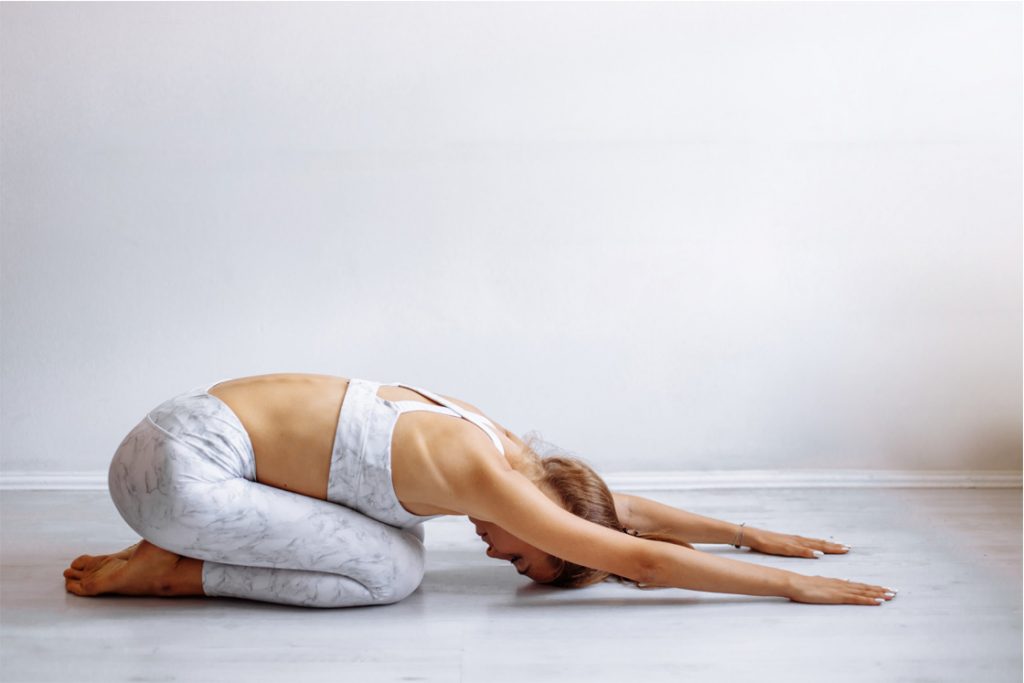
Child’s pose is a wonderful relaxation pose, often recommended to relax and calm the mind. It stretches the hips, hamstrings, spine and back muscles, releasing the tension and stress accumulated in these areas.
The forward bend massages the abdominal organs and promotes blood flow to the area, reducing inflammation. It can also improve digestion and elimination functions
Steps to perform
- Sit in Vajrasana (Thunderbolt Pose) on a yoga mat.
- Place your heels under your buttocks and the top of your feet on the floor. Make sure both your big toe is touching.
- While keeping your spine straight, start bending forward. Bend till your belly touches your thighs. If possible, bring your forehead to touch the ground or place a bolster or block to rest your forehead.
- You can also create a gap between the thighs if placing the abdomen on the thighs is uncomfortable for you.
- If you lack flexibility in your hips, a bolster can be placed lengthwise between the gap so that your torso can rest on it.
- Spread your arms forward in front of you with your palms down and fingers spread. You can also keep them beside your thighs or place them behind your back with hands entwined or in Anjali Mudra.
- Stay in this position for at least 5-8 breaths or as long as you are comfortable.
Cobra Pose (Bhujangasana)
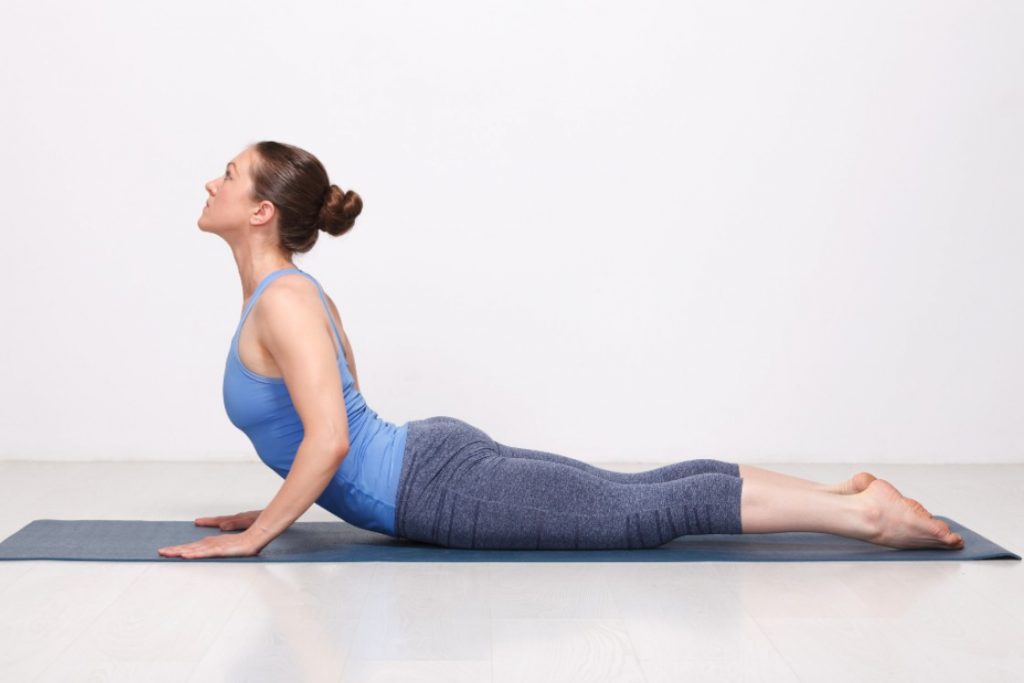
By putting pressure on the abdomen, the cobra pose tones the abdominal muscles. It massages the abdominal organs, including the large and small intestines. This stimulation improves blood circulation in the area. Cobra pose also reduces stress and fatigue, which is one of the common symptoms of IBD.
Steps to perform
- Lie down on your stomach and place your forearms placed beside your ribs.
- Keep your legs hip-width apart or joined together. The top of your feet should be flat on the ground.
- Bring your hands near the shoulder and spread your fingers to create firm support. Your elbows should be close to the torso and parallel to each other.
- Putting pressure on your hands and lifting your head and your chest upwards.
- Your lower body, from the pelvis to the toes will stay on the mat. Tilt your head back and gaze upwards, if possible.
- Keep your shoulder away from your ears and shoulder blades pressed towards the back. Stay in this pose for 3-5 breaths and gently come back to rest your body on the mat.
Wind relieving pose (Pawanmuktasana)
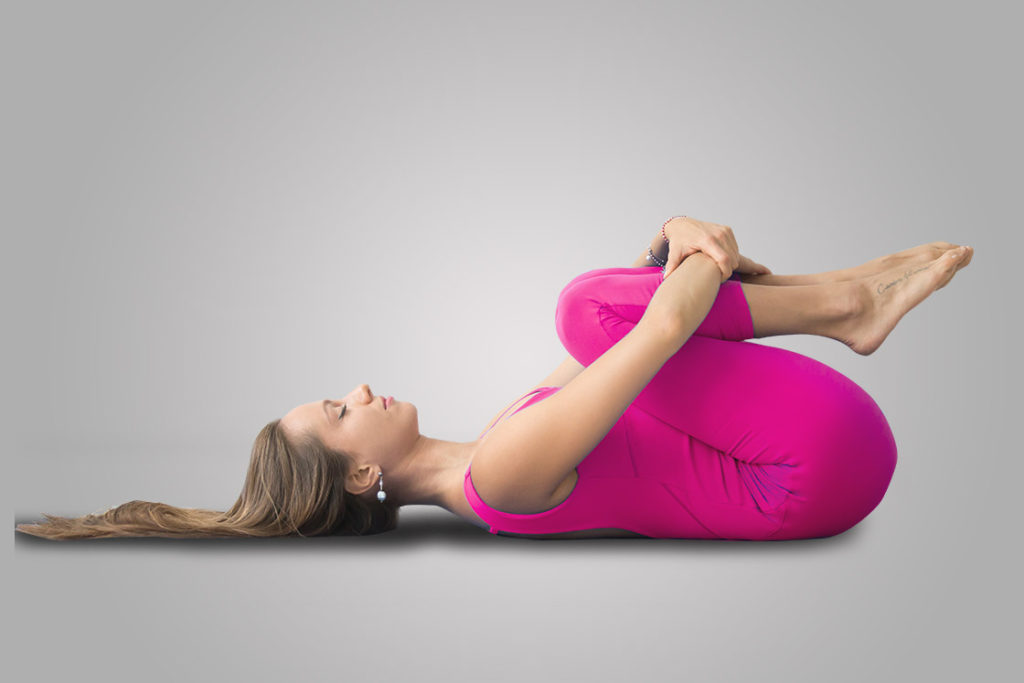
Internal organ efficiency is increased as a result of the internal organs being compressed and the abdominal muscles strained, which also improves blood flow and activates the nerves. The compression also releases trapped gases in the large intestines and improves overall digestive function.
Steps to perform
- Lie down on your back with your legs extended straight.
- Gently bend the knees and bring them as close your to your chest as possible. Wrap your arms around just below the knees.
- Depending on the closeness of the knees to the chest, you can hold your opposite elbows, forearms, or wrists.
- To stretch the spine, push the tailbone toward the floor. Maintain the back of the neck extended by letting the chin tuck lightly.
- After staying in this pose for a few moments, slowly lift your chest and head off the ground. You can also keep your head on the ground if you have a stiff neck.
- If possible, you can touch the tip of the nose to the knee.
- Hold this pose for 3-5 breaths.
Bridge Pose (Setu Bandhasana)
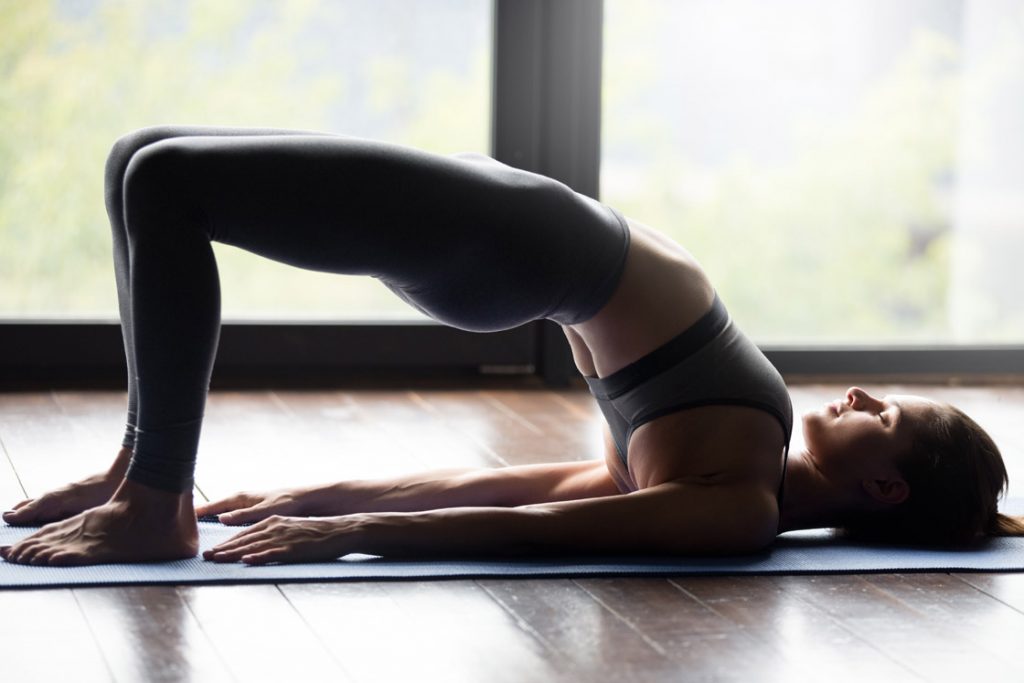
The big intestine and colon receive more blood when performing the Bridge Pose, which promotes more efficient internal movement. It also soothes the brain and aids in better digestion and metabolism.
Steps to perform
- Lie down on your mat with your legs bent at the knees. Spread them hip-width apart and press your soles firmly on the mat.
- Your lower legs should be parallel to each other with your knees stacked over your ankles.
- Place your arms beside you, palms facing down. Alternatively, you can tuck your hand under your buttocks.
- Engage your core and placing your feet firmly on the mat, lift your hips off the mat.
- To reduce the pressure on the upper body, you can place a stack of books or yoga blocks under your hips so that you can rest your buttocks on them. Additionally, put a folded blanket or towel under your shoulder blades for an enhanced cushion.
- Keep pressing down your feet to lift your thighs, hips, lower back, and upper back.
- Hold this position for 3-5 breaths and gently lower the body to the ground.
Pranayama Practice for IBD
Pranayama, the practice of controlled breathing techniques in yoga, can be beneficial for individuals with IBS by promoting relaxation, reducing stress, and calming the nervous system.
Kapalbhati
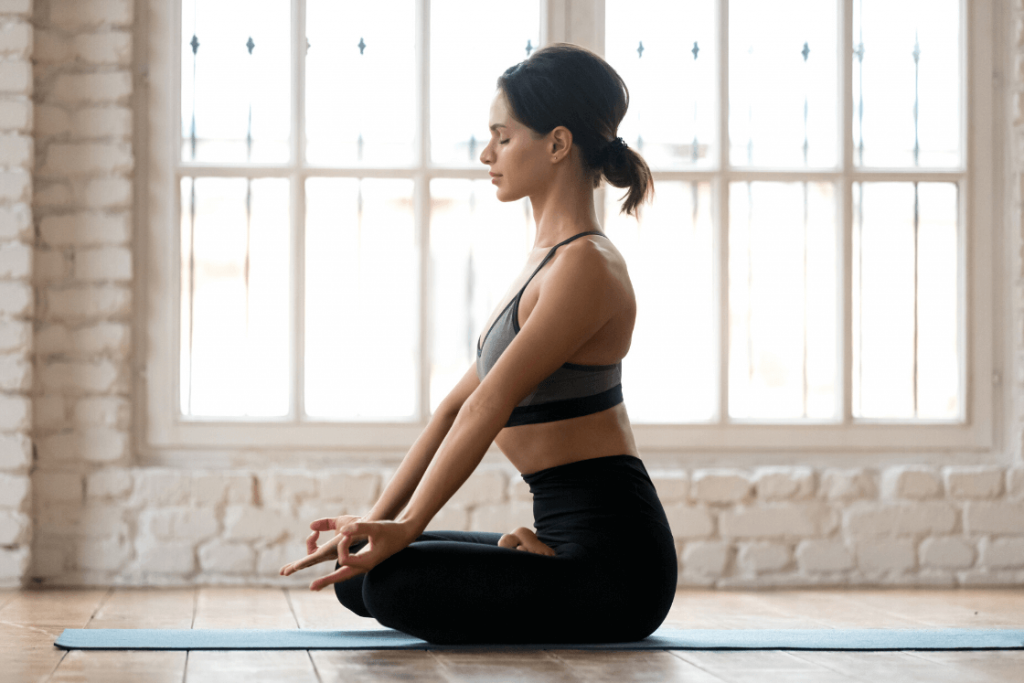
The strong and well-known breathing technique of kapalbhati balances the entire body perfectly and enhances general well-being. It is an effective treatment for indigestion, gastritis, hyperacidity, and constipation because it massages the digestive tract well and enhances processes like digestion, absorption, and peristaltic movement, among others.
Steps to perform
- Sit in a comfortable meditative position with a straight back. Place your hand on your knees in a mudra of your choice.
- Take a deep inhalation and without any pause, forcefully exhale with the inhalation and exhalation should be of equal lengths.
- The emptiness caused by the exhalation will make way for passive automatic inhalation.
- After 5-10 rounds, you can increase the speed of inhales and exhales.
- Begin by practicing it for 30 seconds and gradually increase the time.
Sitali Pranayama (Cooling Breath)
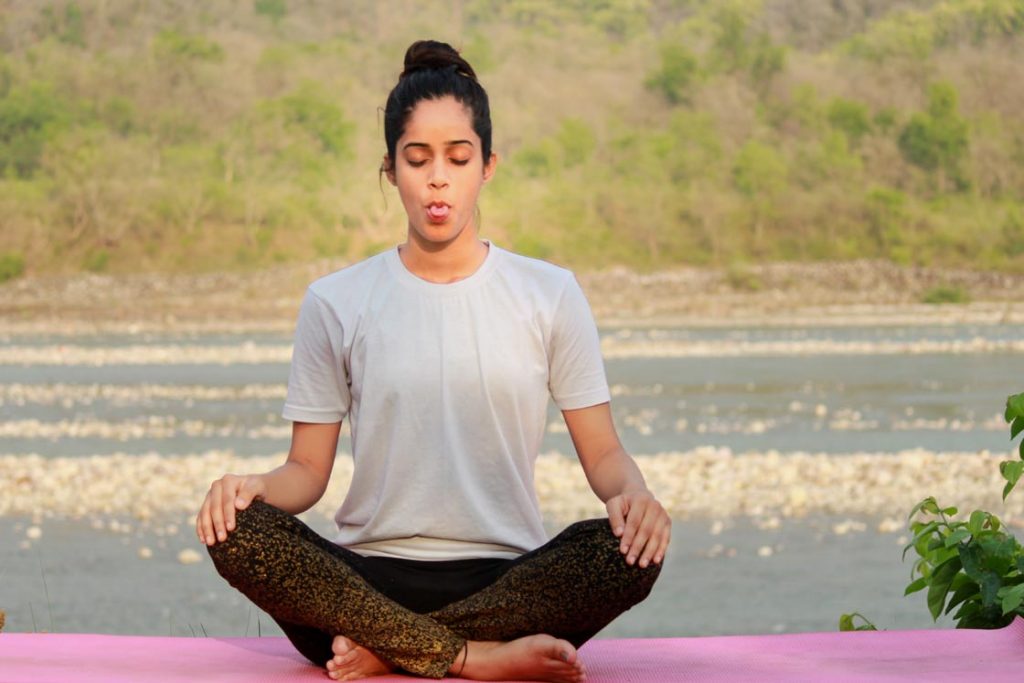
Your body and mind will feel cooler after practicing the Sitalini pranayama. This pranayama is incredibly beneficial in decreasing heartburn, indigestion, and acid reflux.
Additionally, it is known to treat biliary problems, ulcers, an enlarged spleen, fever, and colic.
The parasympathetic nervous system is activated by the cooling breath, lowering blood pressure, reducing stress and anxiety, and promoting a peaceful and serene state of mind.
Steps to perform
- Sit comfortably with your spine straight and your neck in line. Sitting on a chair is also suitable.
- Form an ‘O’ shape on your mouth as if you were holding a straw.
- Your tongue should be slightly protruded from your mouth and curled at the sides.
- Take a deep breath letting the cool air pass through your tongue and throat.
- Pull your tongue inside and close your mouth as you slowly breathe out through your nose to release the heated air.
- Practice this pranayama for 2-3 minutes.
Yoga Mudras for IBD
Pushan Mudra
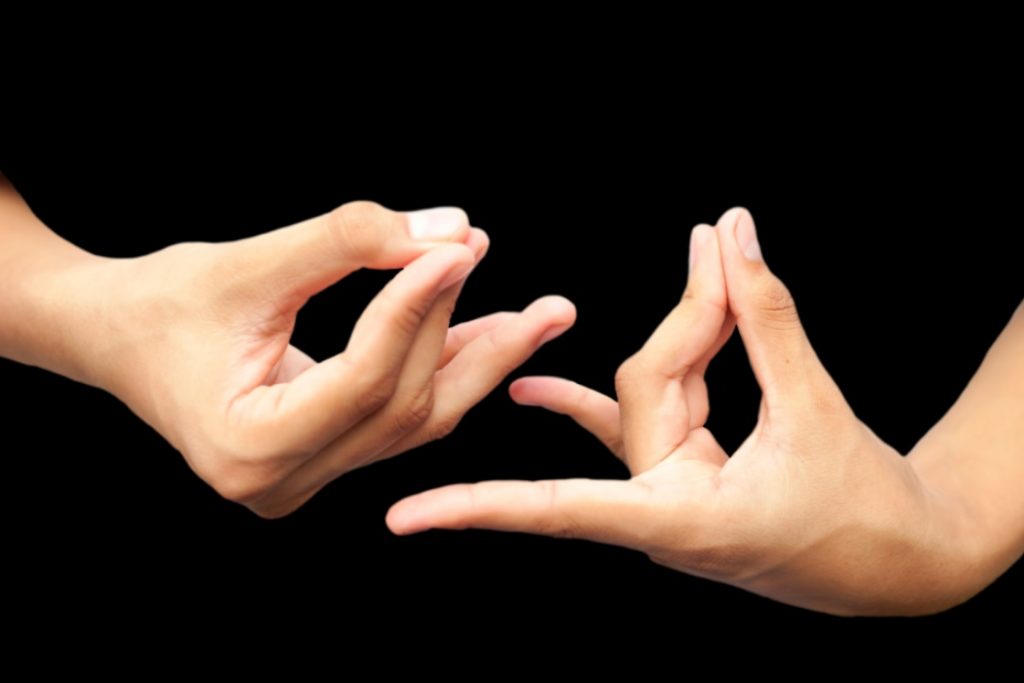
This mudra stimulates your internal digestive fires, which enables your body to get the most nutrition possible from the meals you ingest. It facilitates detoxification and mobilizes elimination. The solar plexus and every organ in its vicinity are both impacted by this mudra. The different mudras in each hand aid in improving mood and concentration while reducing stomach problems like constipation and acidity.
To perform this mudra, make vyana mudra on the right hand – touching the tips of the index and middle finger to the tip of the thumb.
Make Apana mudra on the left hand – join the tips of the middle and ring finger to the tip of the thumb.
Vayu Mudra
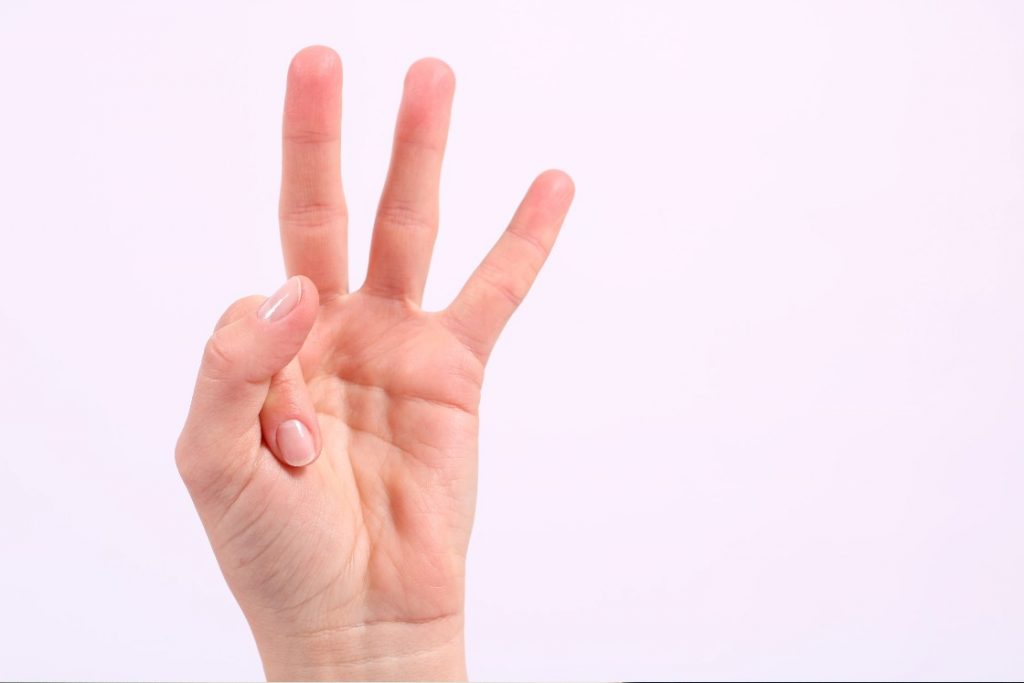
It is very advantageous to use the Vayu mudra for gas because it not only aids in preventing gas buildup but also lessens its unpleasant and painful effects. The colon, or large intestine, functions better thanks to the yoga mudra for digestion. Vayu mudra also harmonizes the endocrine system and aids in giving a calm mind.
To perform this mudra, fold the index finger such that the tip of the finger touches the base of the thumb. Place the thumb on the middle phalange of this finger. This mudra is done on both hands with palms facing up.
Conclusion
Inflammatory Bowel Disease is easily preventable if you incorporate yoga practice into your daily routine as they are safe and considerably low impact. However, yoga should be practice not replace medication. If your problem is severe, you should immediately consult your doctor and reduce the symptoms before you start a yoga practice.




